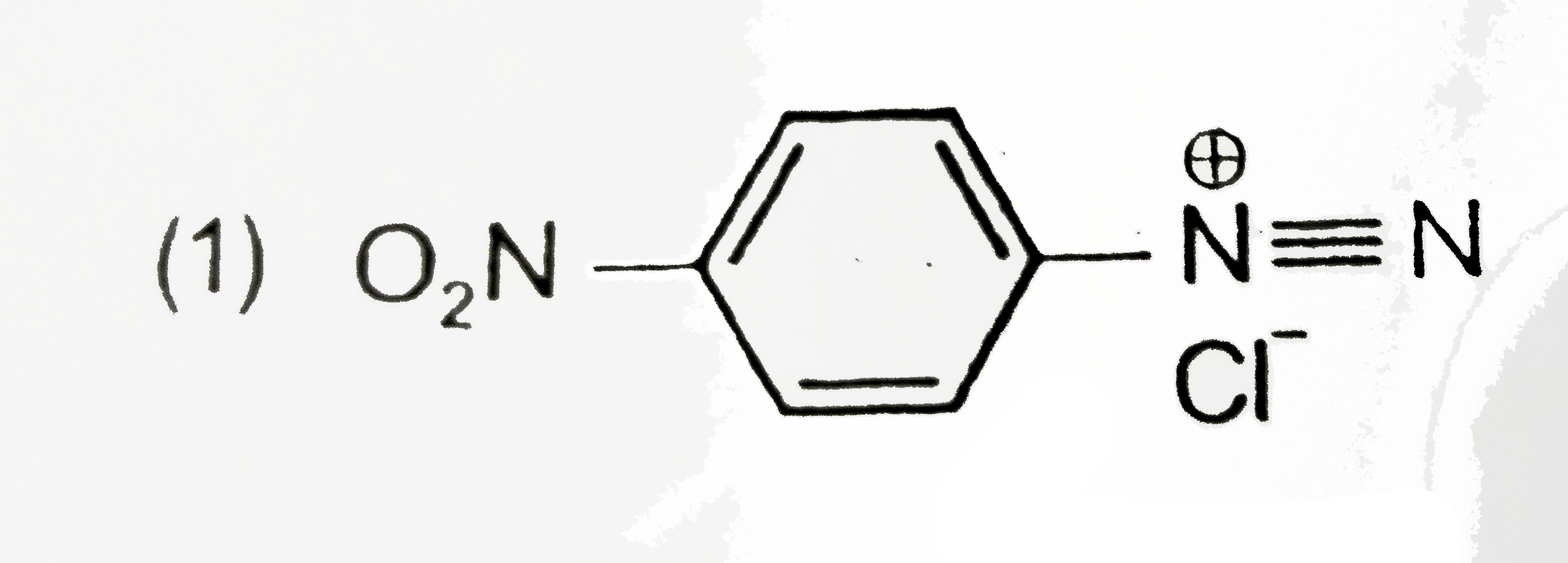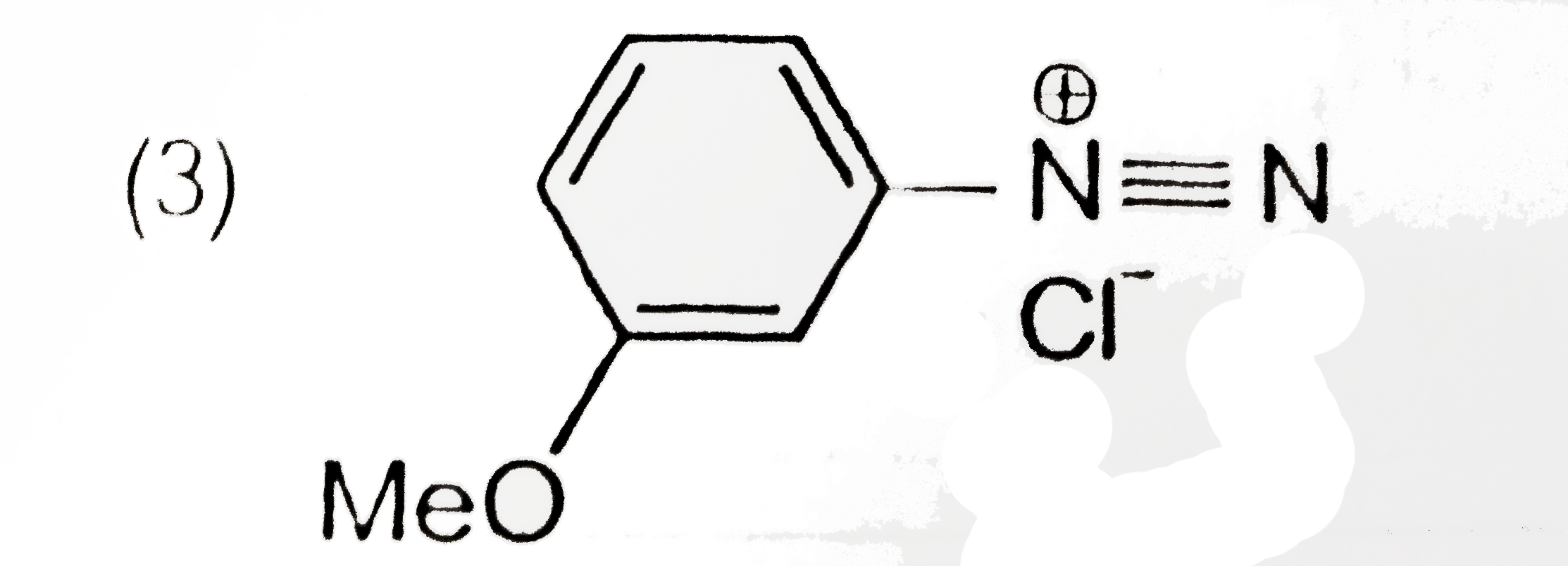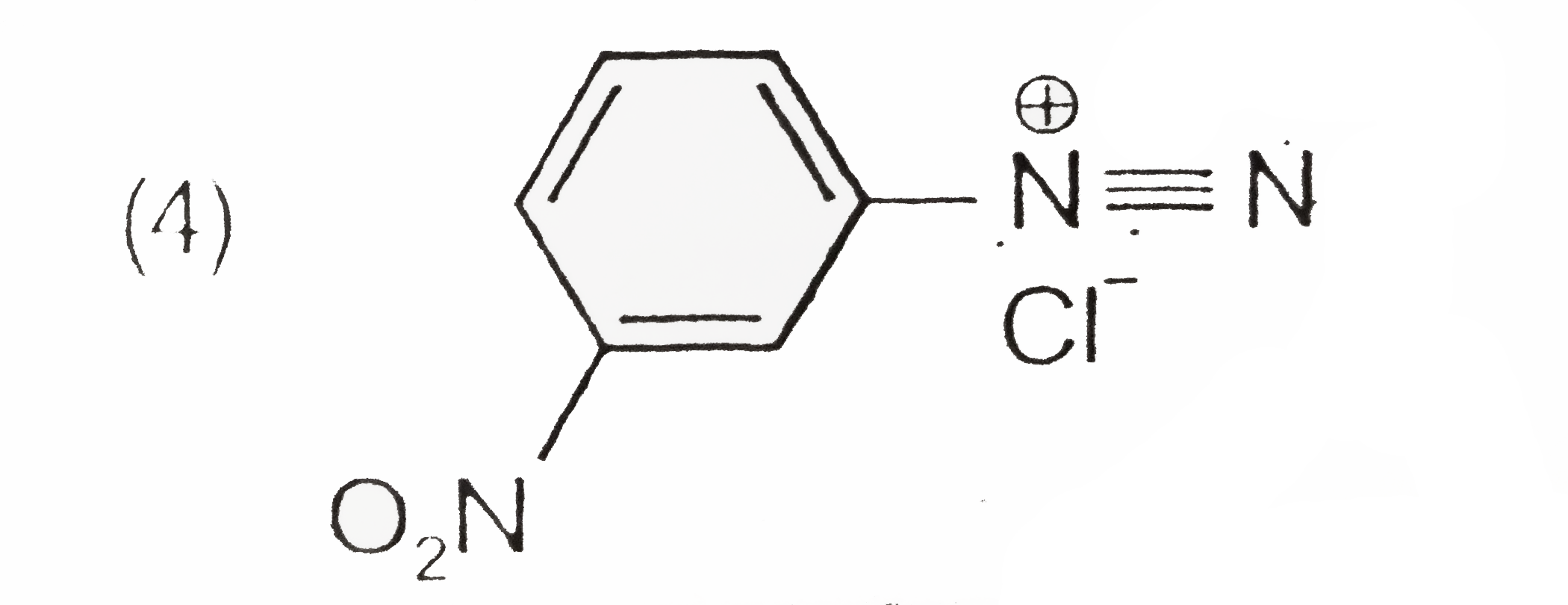Treatment of primary amines with nitrous acid gives diazonium ions. Aliphatic diazonium ions decompose under the diazotization conditions to give complex mixture of products. Aryldiazonium ions are stable and is a valubale intermediate. They react with activated aromatic compounds to give coupling product.
At what pH phenol reacts with benzene diazonium chloride to give coupling product?
pH=2
pH=7
pH=9
pH=14
The correct Answer is:C
Step by step video, text & image solution for Treatment of primary amines with nitrous acid gives diazonium ions. Aliphatic diazonium ions decompose under the diazotization conditions to give complex mixture of products. Aryldiazonium ions are stable and is a valubale intermediate. They react with activated aromatic compounds to give coupling product. At what pH phenol reacts with benzene diazonium chloride to give coupling product? by Chemistry experts to help you in doubts & scoring excellent marks in Class 12 exams.
Topper's Solved these Questions
- BOOK - AAKASH INSTITUTECHAPTER - AMINES EXERCISE - Assignment Section E Assertion-Reason Type Questions9videos
AMINES
- BOOK - AAKASH INSTITUTECHAPTER - AMINES EXERCISE - Assignment Section F Matrix- Match Type Questions1videos
AMINES
- BOOK - AAKASH INSTITUTECHAPTER - AMINES EXERCISE - Assignment Section C (Objective type questions more than one options are correct)13videos
AMINES
- BOOK - AAKASH INSTITUTECHAPTER - ALDEHYDES, KETONES AND CARBOXYLIC ACIDS EXERCISE - Try Yourself20videos
ALDEHYDES, KETONES AND CARBOXYLIC ACIDS
- BOOK - AAKASH INSTITUTECHAPTER - BIOMOLECULESEXERCISE - EXERCISE (ASSIGNMENT) SECTION - D Assertion - Reason Type Questions5videos
BIOMOLECULES
Similar Questions
Treatment of primary amines with nitrous acid gives diazonium ions. Aliphatic diazonium ions decompose under the diazotization conditions to give complex mixture of products. Aryldiazonium ions are stable and is a valubale intermediate. They react with activated aromatic compounds to give coupling product.
What would be the product of the given reaction?
 View Solution
View SolutionAn optically active compound having molecular formula C7H15Br reacts with aqueous KOH to give a racemic mixture of products write the mechanism involved in the reaction.
View Solution
Knowledge Check
- Question 1 - Select One
Treatment of primary amines with nitrous acid gives diazonium ions. Aliphatic diazonium ions decompose under the diazotization conditions to give complex mixture of products. Aryldiazonium ions are stable and is a valubale intermediate. They react with activated aromatic compounds to give coupling product.
At what pH phenol reacts with benzene diazonium chloride to give coupling product?A B
B C
C D
D
- Question 2 - Select One
p−Toluedine reacts with benzene diazonium chloride to form compound, which on boiling with aq. H2SO4 give......products
A3B2C4D5 - Question 3 - Select One
Diazonium salt formation and coupling reaction: When a reaction mixture of phenyl amine and nitrous acid is kept below 10∘C, a diazonium salt is formed. This reaction is called diazotization reaction.
_E01_893_Q01.png)
The diazonium ion, −N+2, is rather unstable and decomposes readily to nitrogen. However, delocalization of the diazonium from π−bond electron over a benzene ring phenyl diazonium sufficiently for it to form at low temperature. The phenyl diazonium ion behaves as an electrophile, and will attack another arene molecule such as phenol. Electrophilic subsitiution takes at the 4 position, producing 4-hydroxy phenyl azobenzene. The reaction is known as coupling reaction.
_E01_893_Q02.png)
The compound formed is an energetically stable, yellow azo dye (the azo group is −N=N−) The stability is due to extensive delocalisation of electrons via the nitrogen- nitrogen double bonds.
The product_E01_893_Q03.png) which is a red azodye obtained on reacting benzene diazonium chloride with one of the following compounds : A
which is a red azodye obtained on reacting benzene diazonium chloride with one of the following compounds : A_E01_893_O01.png) B
B_E01_893_O02.png) C
C_E01_893_O03.png) D
D_E01_893_O04.png)
An optically active compound having molecular formula C7H15Br reacts with aqueous KOH to give a racemic mixture of products. Write the mechanism involved for this reaction.
View SolutionDiazonium salt formation and coupling reaction: When a reaction mixture of phenyl amine and nitrous acid is kept below 10∘C, a diazonium salt is formed. This reaction is called diazotization reaction.
_E01_891_Q01.png)
The diazonium ion, −N+2, is rather unstable and decomposes readily to nitrogen. However, delocalization of the diazonium from π−bond electron over a benzene ring phenyl diazonium sufficiently for it to form at low temperature. The phenyl diazonium ion behaves as an electrophile, and will attack another arene molecule such as phenol. Electrophilic subsitiution takes at the 4 position, producing 4-hydroxy phenyl azobenzene. The reaction is known as coupling reaction.
_E01_891_Q02.png)
The compound formed is an energetically stable, yellow azo dye (the azo group is −N=N−) The stability is due to extensive delocalisation of electrons via the nitrogen- nitrogen double bonds.
The azo dye obtained on reacting 4-aminophenol with nitrous acid (in dilute hydrochloric acid) below 10∘C and coupling the resulting diazonium salt with phenol is :View SolutionDiazonium salt formation and coupling reaction: When a reaction mixture of phenyl amine and nitrous acid is kept below 10∘C, a diazonium salt is formed. This reaction is called diazotization reaction.
_E01_892_Q01.png)
The diazonium ion, −N+2, is rather unstable and decomposes readily to nitrogen. However, delocalization of the diazonium from π−bond electron over a benzene ring phenyl diazonium sufficiently for it to form at low temperature. The phenyl diazonium ion behaves as an electrophile, and will attack another arene molecule such as phenol. Electrophilic subsitiution takes at the 4 position, producing 4-hydroxy phenyl azobenzene. The reaction is known as coupling reaction.
_E01_892_Q02.png)
The compound formed is an energetically stable, yellow azo dye (the azo group is −N=N−) The stability is due to extensive delocalisation of electrons via the nitrogen- nitrogen double bonds.
Benzene diazonium chloride on reaction with phenol in weakly basic medium gives :View SolutionBenzene carbaldehyde is reacted with concentrated NaOH solution, to give the products 'A' and 'B'. The prodcut 'B' is an aromatic hydroxy compounds where OH group in linked to sp3 hybridised carbon atom next to benzene ring. The products 'A' and 'B' are respectibvely:
View SolutionA compound of molecular formula C3H9N when reacts with benzene sulphonyl chloride gives a product soluble in dilute NaOH solution. The compound should be
View Solution
